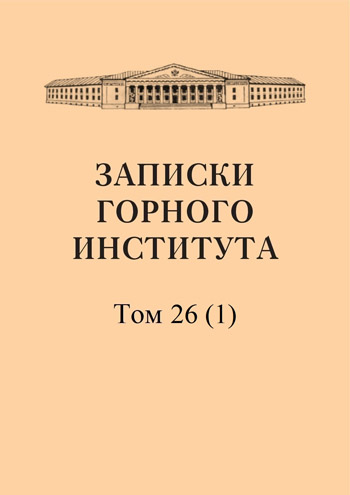Taking into account the influence of errors of initial points when assessing the accuracy of mine survey triangulation networks
Abstract
When using formulas of the theory of errors and the method of least squares for assessing the accuracy of triangulation networks, it is necessary to strive for the most complete consideration of all sources of errors that affect the accuracy of determining the elements of the network. This applies primarily to the influence of errors in the initial data, the issue of taking into account which has repeatedly attracted the attention of geodesists and mine surveyors. In the existing works devoted to this issue, the most detailed solution is based on the direct application of the main formula of the theory of errors to the function of interest to us, which is preliminarily expressed through directly measured quantities (see article). The strict formulas given in the mentioned works, however, are difficult to apply to the analysis of the accuracy of mine survey triangulations, which are usually rigid networks of the lowest construction queues and have a significant amount of initial data. The use of these formulas is associated with the production of very cumbersome calculations that do not have sufficient clarity and hide from the calculator the mechanism of accumulation of errors in the network, thereby complicating the transition to approximate methods of assessing accuracy. To solve some specific problems of assessing the accuracy of network elements encountered in mine surveying practice, it is possible to derive special formulas that solve these problems much more simply and clearly.
References
- Pranis-Pranevich I.Yu. Determination of the mean square error of a function taking into account errors in the initial data during adjustment by the least squares method, Proceedings of the Central Research Institute of Geodesy and Geophysics, issue 5, Geodezizdat, 1939.
- Larin D.A. Estimation of the accuracy of triangulation taking into account errors in the initial data, Collection of research and production articles, issue XXII, 1948.
- Kell N.G. Graphic method in actions with errors and positions, Publishing House of the USSR Academy of Sciences, 1948.
- Kavraysky V.V. Lines of position and their application, Bulletin of the Voroshilov Naval Academy, issue 2, 1939.
- Nikiforov B.I. Accuracy of geodetic determination of a point by solving the Potenota problem, Proceedings of the Hydrographic Institute of the Sea of Azov, issue 1, 1939.
- Muzaffarov M.Kh., Determination of the mean square error of the function of balanced values of the geodetic network taking into account the errors of the initial data, collection of scientific, technical and industrial articles, issue XXXII, 1950.
